People are accustomed to thinking of nest boxes when they think of birds raising their young. Yes, now that there are so few dead trees left standing to provide cavities, nest boxes are necessary. But the ideal is to leave some dead trees standing so they can make their own cavities for nesting and roosting. This can be done safely! But many bird species use neither nest boxes nor cavities. They create nests in trees or shrubs, or other places — even on the ground.
Not every bird nests in cavities (and therefore not in nest boxes, either). Many birds build nests in trees or in shrubs. Some even build their nests in grasses or on the ground, but we’ve rarely had any of those in our yard (that we know of).
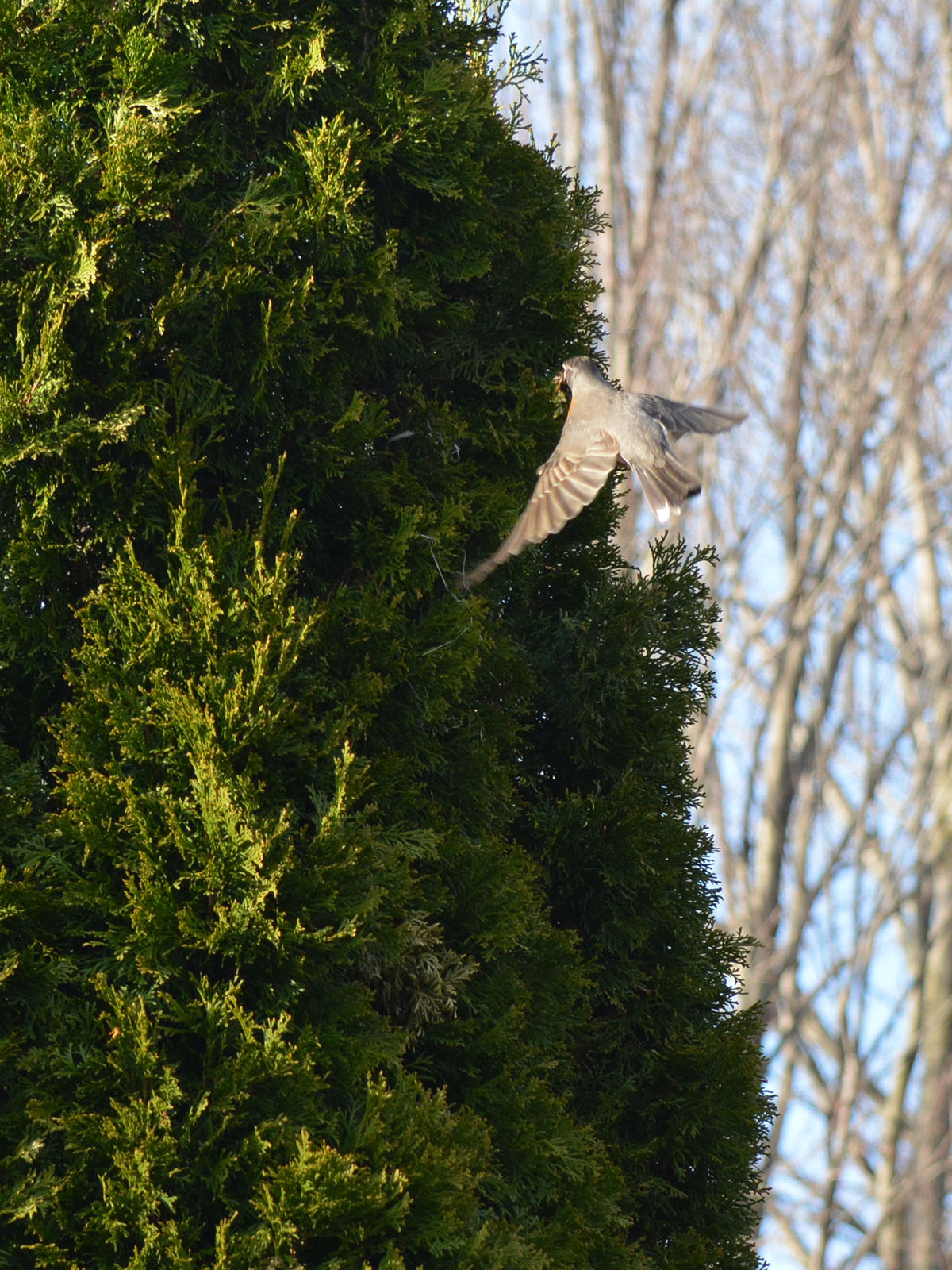
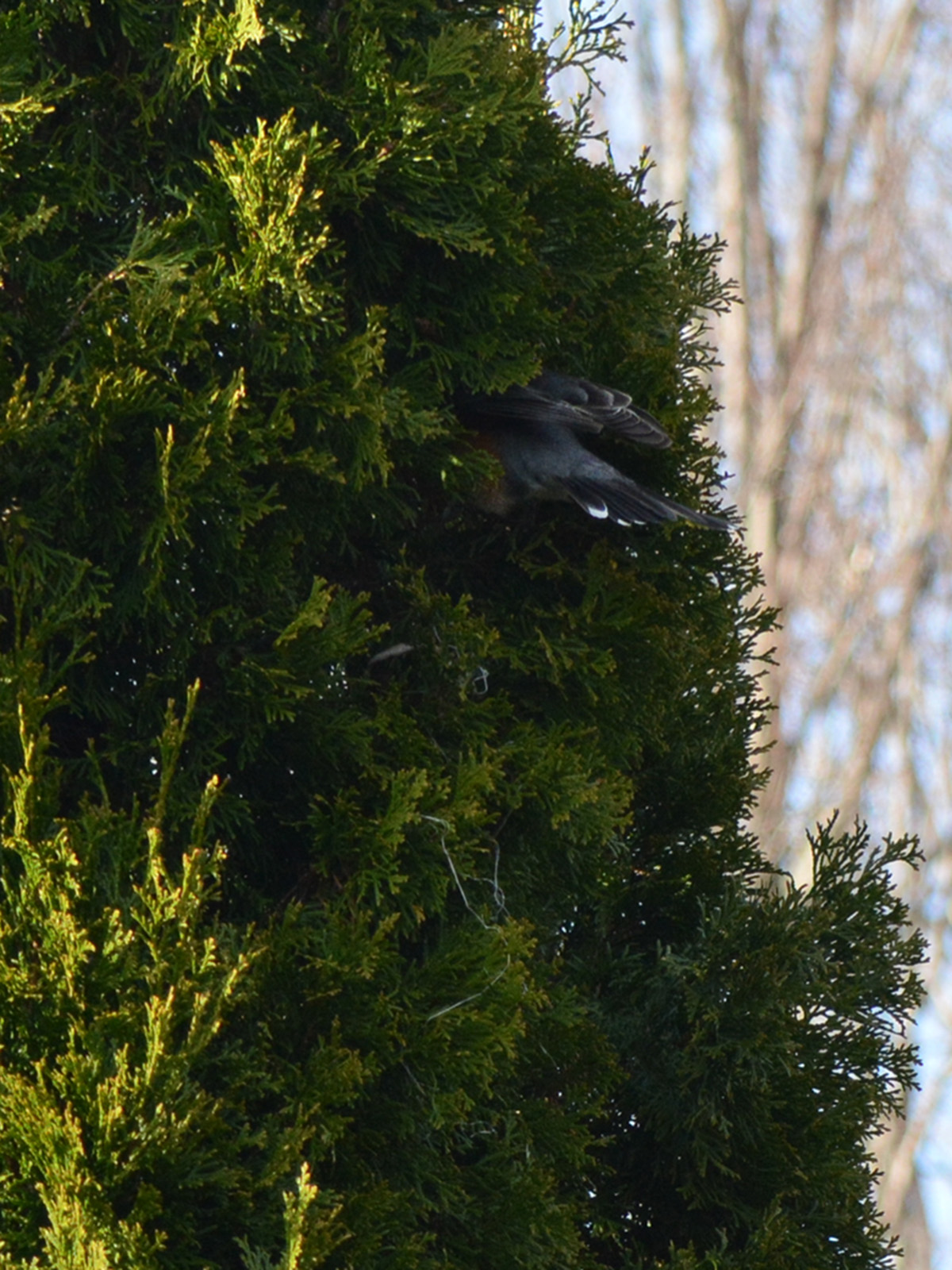
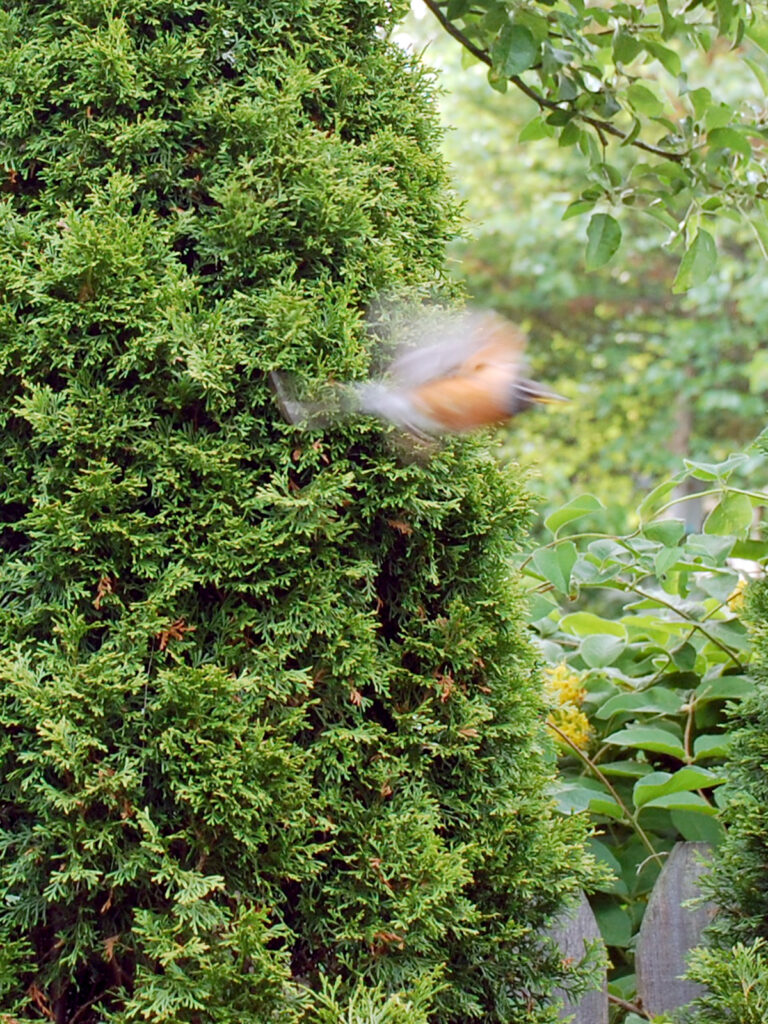
The robin in the photo built its nest in one of the arborvitaes along our driveway. If we hadn’t seen her leaving and entering this area of the shrub we never would have suspected the nest was there. After the nestlings fledged, we inspected the nest (as seen in the introductory photo). It was indeed very well-hidden!
We’ve also had cardinals nesting in these arborvitaes.
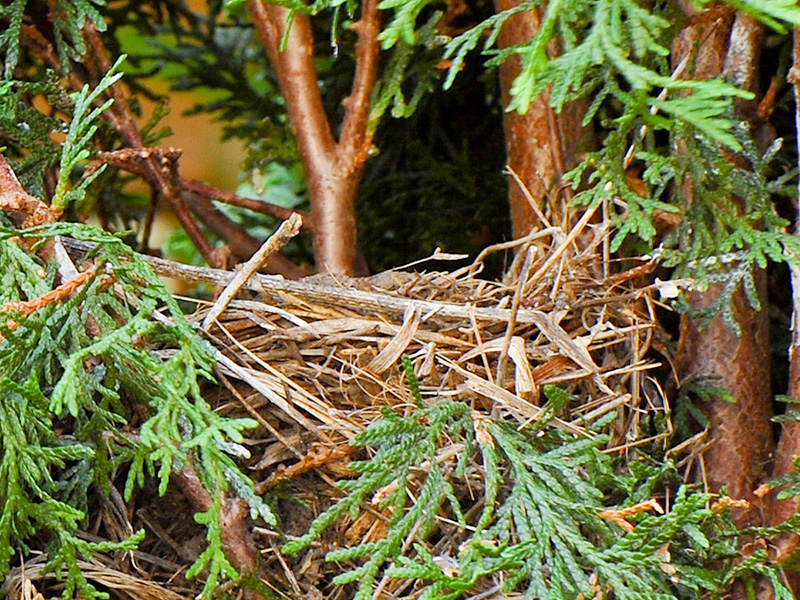
We investigated it after the babies left the nest. Beautiful construction!
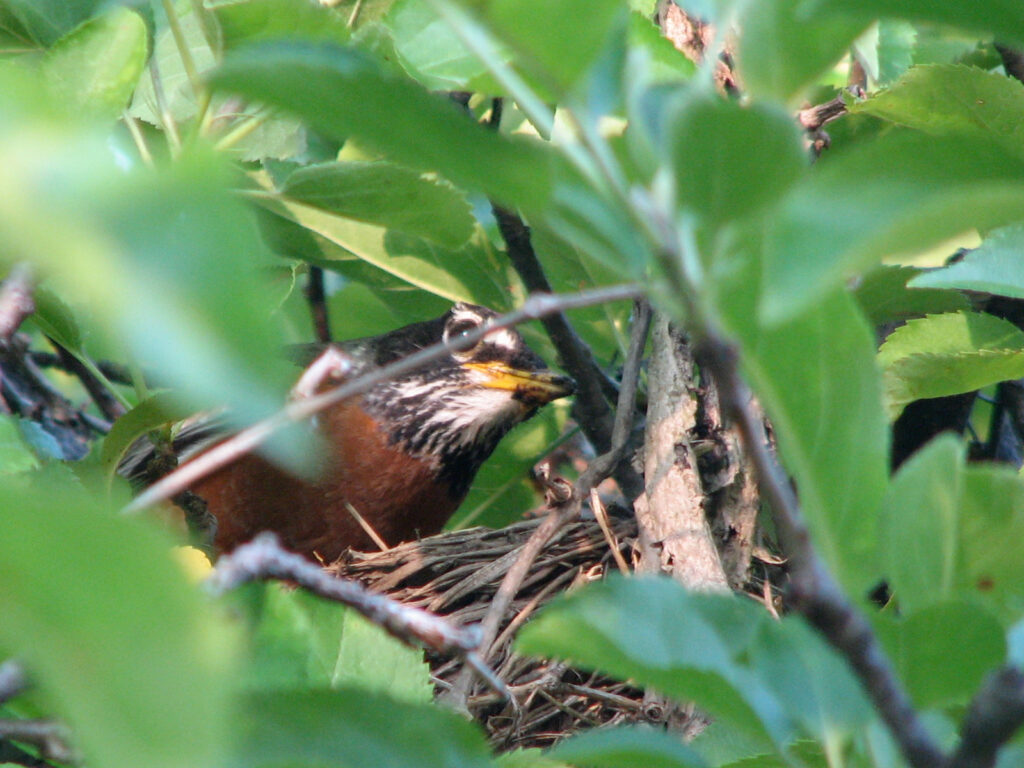
This robin nested in our apple tree right above our rain barrels. We’re at the rain barrels frequently, so I guess she doesn’t mind not having complete privacy, though she was eyeing me warily as I tried to take some photos of the nest.
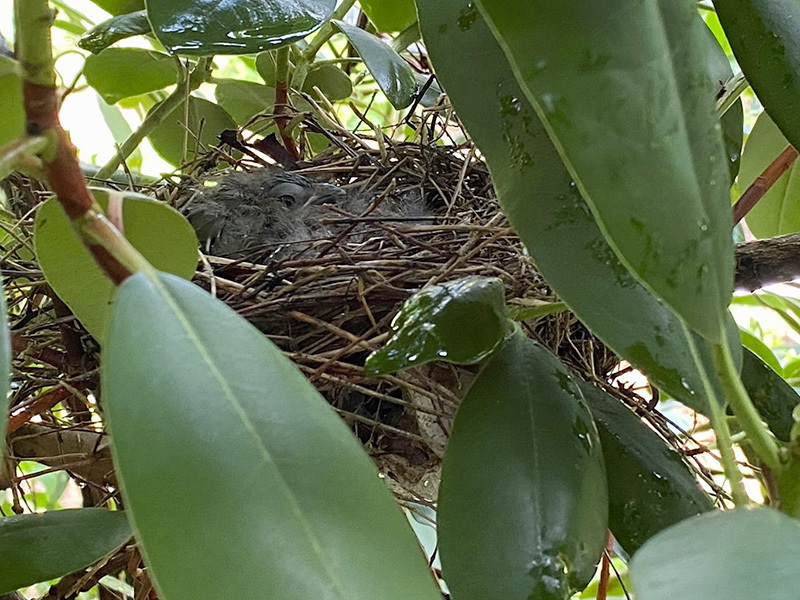
Interestingly, some research shows that nests built in non-native bushes have a higher predation rate. Yet another reason we focus on native plantings, such as this rhododendron that was home to a family of cardinal babies. (Look closely to see the baby.)
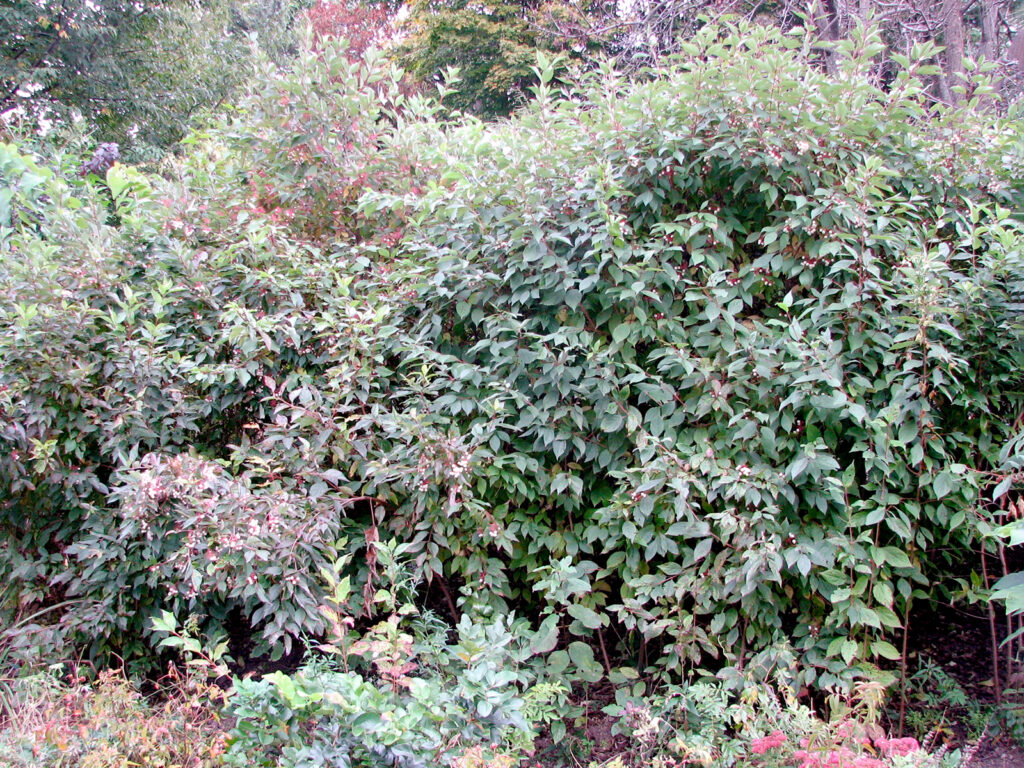
Patches of native shrubs, like these gray dogwoods outside our fence, are good areas for birds to nest in, too.
The catbirds have returned year after year to raise their young somewhere out in back of this area, either in these shrubs or in the evergreens next to the back fence.
Since catbirds can live quite a few years, we suspect (and hope!) that these are the same individuals returning to our yard. Thinking of these birds motivates us to be sure to purchase only bird-friendly coffee! This patch of gray dogwood is a favorite place for birds to hang out in any case.
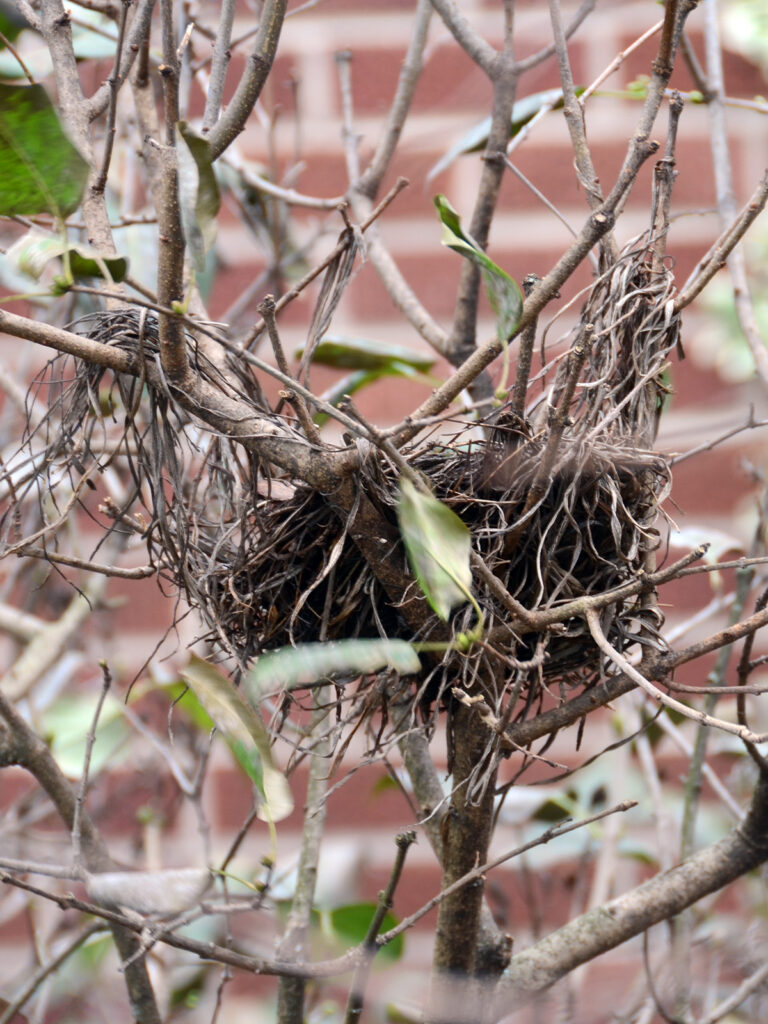
Although grackles aren’t our favorite bird, it was interesting to watch them building the nest and feeding their young in this small tree outside our kitchen window.
Since then, they’ve claimed an arborvitae in the back yard and have returned year after year, intimidating other birds as they take over the yard.
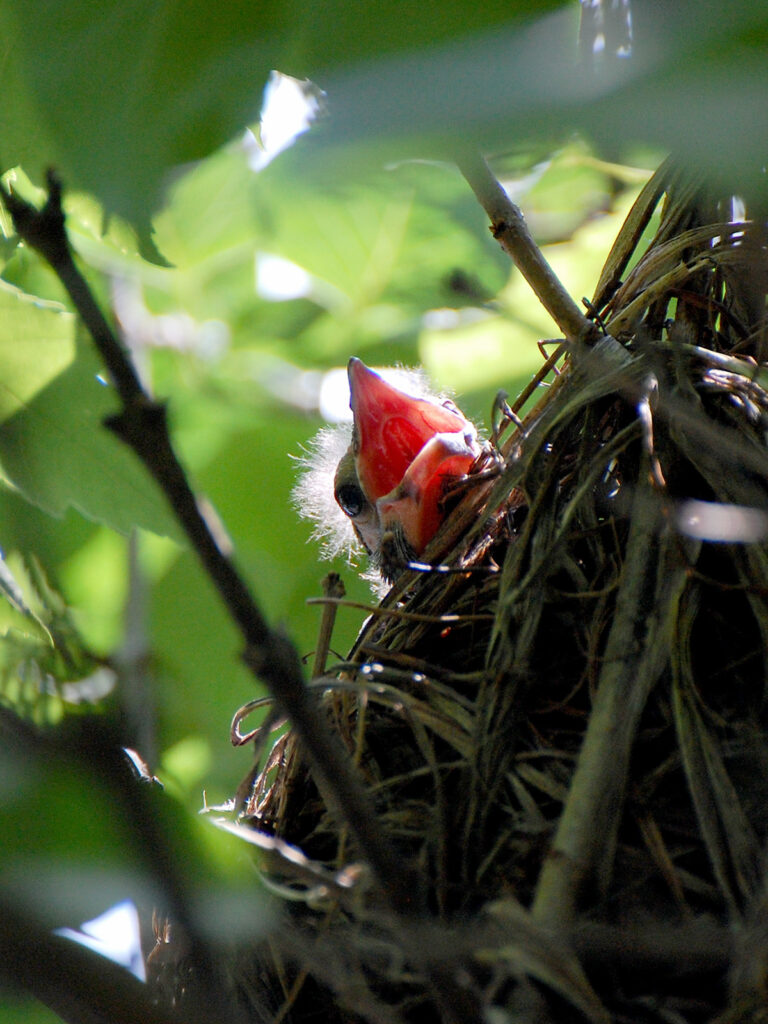
One year they chased out a pair of cardinals as well as a pair of mourning doves that had already begun building nests. I was so looking forward to watching these birds raise their young, and what we got instead was multiples nests of grackles!
After a few years, it seemed like the group of grackles were settled into our yard each year. We decided to try to make the grackles feel unwelcome before they built their nests by chasing them whenever we saw them.
(NOTE: As a native species, though, it’s unethical — and illegal — to damage or remove a grackle nest.)
We were finally (in 2022) successful in discouraging the grackles, and they must have found another area for their group’s nesting. That year we had more birds than ever nesting in our yard: wrens (three times), chickadees, cardinals (twice), and, for the first time, titmice!
On the ground
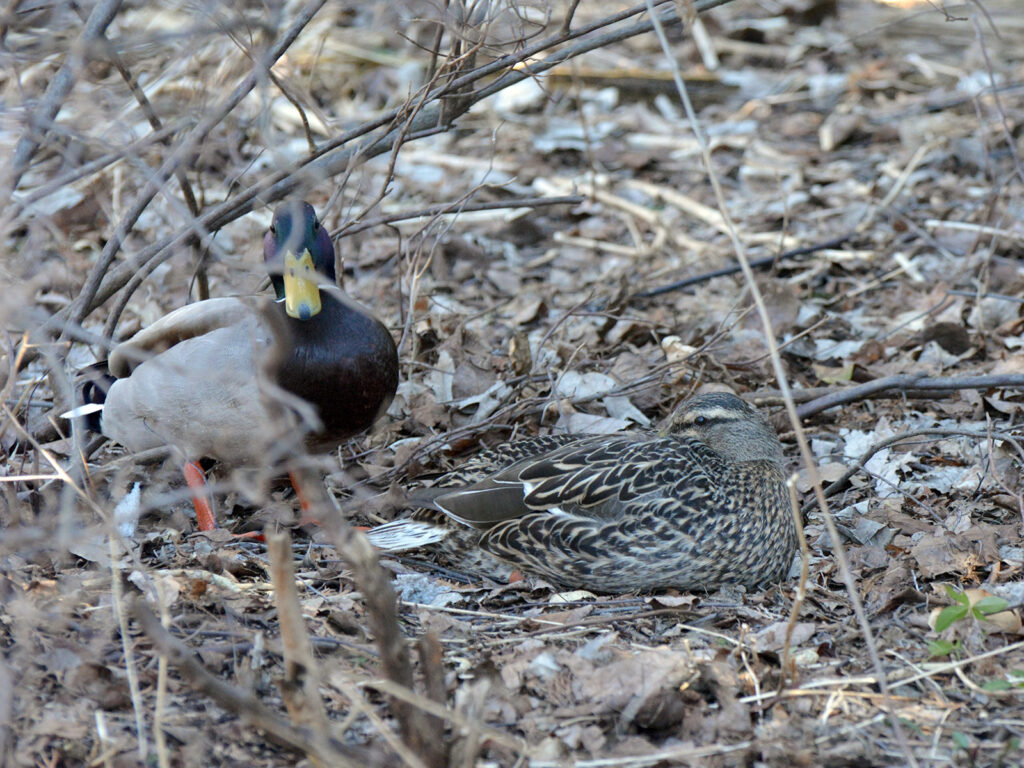
We were surprised to find that the mallard pair that visits us each year actually nested in our hedgerow. This was destined to fail in this busy location with neighborhood cats, other mammals, and traffic! There just aren’t enough resources and protection from predators for this to work. They were here for about a week in the nest, but left for some reason (we don’t know why). But how would our little pond have ever supported a little flock of baby ducks? How I wish they could find a nice large pond to inhabit or even fly over the hill to Onondaga Lake!
Woodcock in NC
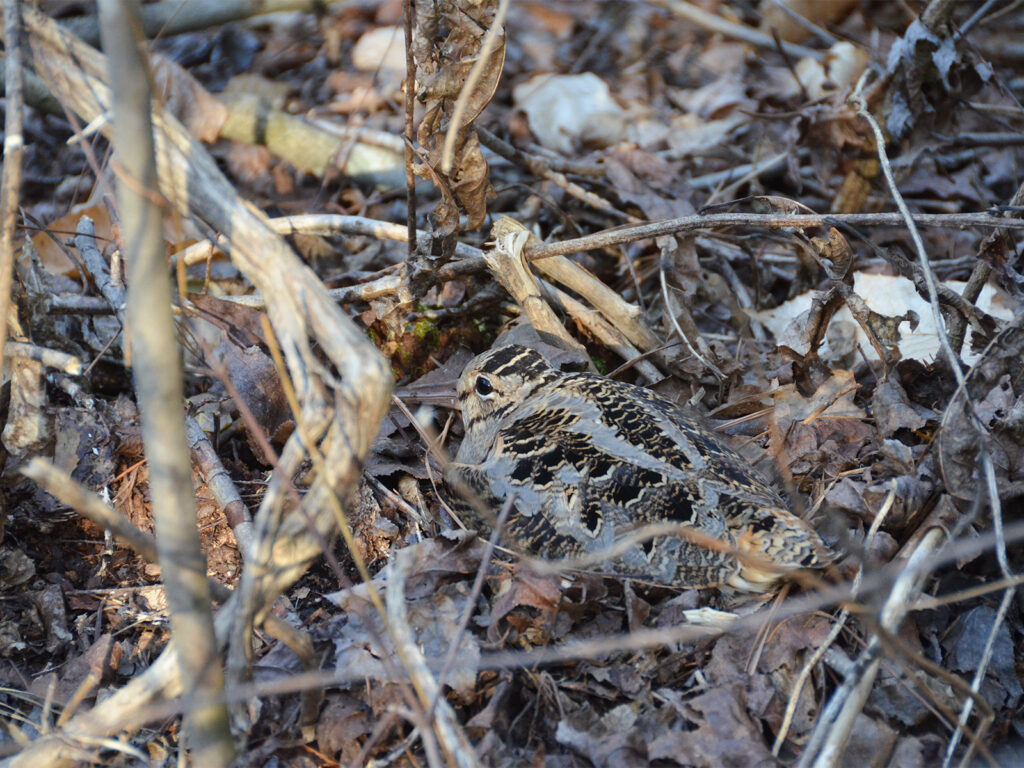
We discovered an American woodcock nesting on the ground in the woods when we were visiting our children in North Carolina. We discovered this on a walk quite by accident. We went off the trail to remove an invasive honeysuckle vine and almost stepped on the nest, prompting a fluttering of wings. It’s well-camouflaged to say the least. We were very grateful that we didn’t hurt the nest. And we were amazed that nests on the ground survive with all the other wildlife around.
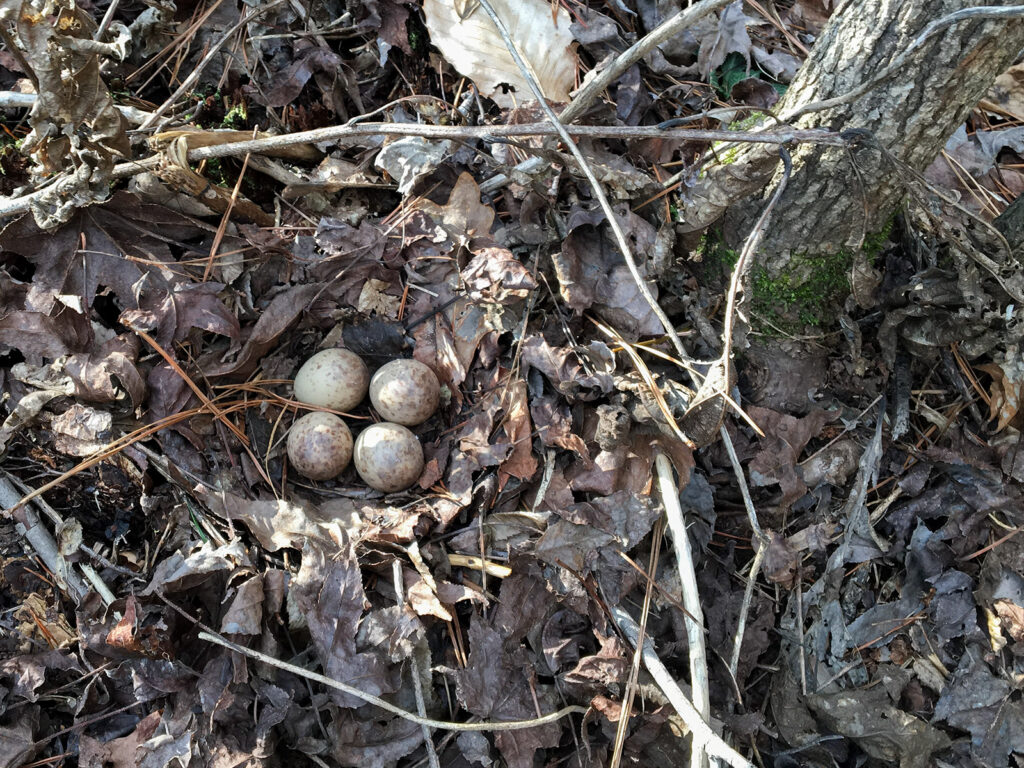
We were lucky to walk by one time when the bird was off the nest. We quickly snapped a photo, and the next time we passed by, she was there back on the nest. We visited it each day (from a safe distance) and were sorry we had to leave North Carolina before we had a chance to see the babies hatch.
Resources
- Van Vleck:
- Snags in the home habitat – how to install a snag in your yard
- American Bird Conservancy:
- Journey North:
- Hummingbird: Day-by-day nestling gallery – Excellent!
- Bird Watcher’s General Store:
Reflections
A field rich in goldenrod, Joe-Pye weed, boneset, milkweed, black-eyed Susan, and dozens of other productive perennials supplies copious amounts of insect biomass for birds to rear their young. After it has been invaded by autumn or Russian olive, that same field is nearly sterile.
~ Douglas Tallamy, Bringing Nature Home, 2nd ed. p. 88
Poor indeed is the garden in which birds find no homes.
~ Abram L. Urban
